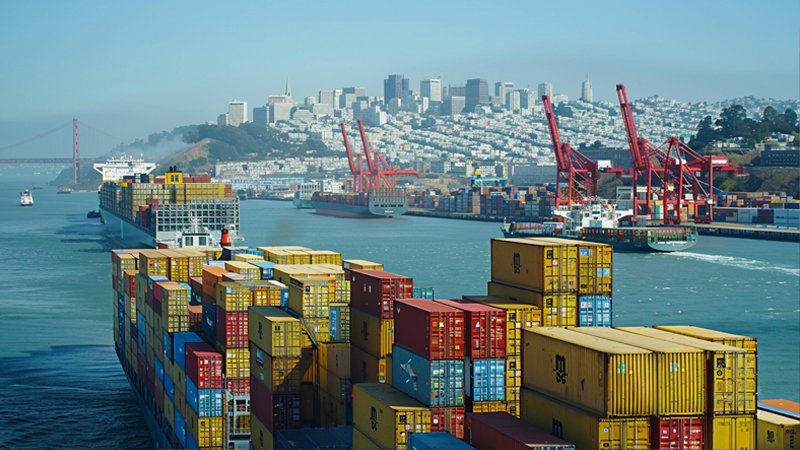
I recently delved into shipping bulk items from China and learned a systematic process to streamline my logistics.
Shipping bulk items from China involves a step-by-step process including order confirmation, proper packaging, documentation, freight booking, and customs clearance.
Let’s explore this process and related strategies in detail.
What is the detailed process for shipping bulk items from China?
I discovered that a clear process is essential, starting from order confirmation to final delivery.
The process includes confirming orders, secure packaging, detailed documentation, freight booking, transit tracking, customs clearance, and final delivery.

When I first explored shipping bulk items from China, I realized that every step must be carefully managed to avoid delays and extra costs. I began by confirming orders with my suppliers, ensuring that all items met quality and regulatory standards. Proper packaging is crucial—using durable, standardized materials minimizes damage during long sea voyages. Once packaged, I compiled all necessary documentation such as commercial invoices, packing lists, and export licenses; I learned that even minor errors in paperwork can cause significant delays at customs.
Next, I booked a reliable freight service and arranged for pickup. The shipment is then loaded onto a vessel, and I keep track of its progress using real-time tracking tools provided by my freight forwarder. When the shipment arrives at the destination port, it undergoes customs clearance1, where detailed inspections and verifications take place. Finally, the goods are delivered to my warehouse or designated distribution center.
This comprehensive process not only ensures safe delivery but also helps in planning future shipments more efficiently. By understanding each step, I can pinpoint potential issues early and implement corrective measures to streamline the entire operation.
| Process Stage | Key Activity |
|---|---|
| Order Confirmation | Verify quality and order details |
| Packaging | Secure goods with durable, standardized materials |
| Documentation | Prepare invoices, packing lists, licenses |
| Freight Booking | Select a reliable carrier and schedule pickup |
| Customs Clearance | Complete inspections and paperwork |
| Final Delivery | Transport to warehouse or fulfillment center |
How can you select the appropriate shipping methods for large and bulky items?
I learned that choosing the right shipping method is about balancing cost, speed, and reliability.
Selecting shipping methods involves evaluating options like sea, air, and rail freight based on volume, urgency, and cost efficiency.

When shipping large and bulky items, I always assess the available methods carefully. Sea freight is typically my first choice for cost-effectiveness, especially for heavy loads that are not time-sensitive. It offers lower rates per kilogram but comes with longer transit times. Alternatively, air freight2 is faster and ideal for urgent shipments, although it is more expensive. Rail freight provides a middle ground, offering relatively quick transit at a moderate cost, particularly for shipments destined for inland locations.
I compare quotes from multiple carriers and consider factors such as the reliability of the service, transit time, and additional fees like fuel surcharges or handling charges. By matching my shipping needs with the best method, I ensure efficiency and control over my logistics. This decision-making process is supported by reading reviews and past performance data from various service providers.
| Shipping Method | Best For |
|---|---|
| Sea Freight | Large volumes, non-urgent shipments |
| Air Freight | Time-sensitive, smaller shipments |
| Rail Freight | Moderate speed with cost efficiency |
What strategies can help you manage risks associated with bulk item shipping?
I discovered that managing risks in bulk shipping requires thorough planning, quality checks, and contingency measures.
Effective risk management involves comprehensive documentation, insurance, quality control, and proactive communication with logistics partners.

In my experience, bulk shipping is fraught with risks like documentation errors, damage during transit, and customs delays. To manage these risks, I always start with meticulous documentation. Ensuring that every shipment is accompanied by accurate invoices, packing lists, and export licenses minimizes the chance of customs issues. I also invest in robust packaging and quality control3 measures, which help protect the goods during long journeys. Insurance is another critical aspect; I always secure comprehensive coverage to protect against potential losses.
Regular communication with my freight forwarder and customs broker is essential. I schedule periodic check-ins to monitor the shipment’s progress and to quickly resolve any issues that arise. Establishing a clear contingency plan4, such as backup shipping methods or alternative routes, has also proven invaluable in mitigating unexpected delays. These strategies, combined with a proactive approach to risk management5, ensure that my bulk shipments reach their destination safely and on schedule.
| Risk Factor | Mitigation Strategy |
|---|---|
| Documentation Errors | Thorough review and double-checking paperwork |
| Damage During Transit | Robust packaging and quality control measures |
| Customs Delays | Accurate documentation and proactive follow-up |
| Unexpected Delays | Insurance and contingency planning |
How can you optimize the costs and time involved in shipping bulk items from China?
I learned that cost and time optimization involves consolidating shipments, negotiating rates, and leveraging technology for real-time tracking6.
Optimization means consolidating orders, using efficient scheduling, and employing technology to track shipments and negotiate better rates.

To optimize shipping costs and transit times, I focus on several key strategies. One effective method is shipment consolidation7. By combining multiple orders into one container, I maximize space utilization and reduce the cost per unit. Negotiation is also critical; I routinely compare quotes from various carriers and leverage my shipping volume to secure discounted rates. Timing plays a big role as well—scheduling shipments during off-peak periods often results in lower costs.
I also make extensive use of technology. Real-time tracking systems and logistics management software provide me with up-to-date information, which allows me to make quick decisions if any delays occur. This proactive approach helps minimize downtime and additional charges. Additionally, I analyze past shipment data to identify patterns and areas for improvement, continuously refining my shipping strategy. This ongoing process of data analysis and negotiation helps me maintain a balance between cost savings and timely delivery.
| Optimization Strategy | Benefit |
|---|---|
| Shipment Consolidation | Reduced per-unit shipping cost |
| Rate Negotiation | Lower costs through volume discounts |
| Off-Peak Scheduling | Lower transit rates during non-peak periods |
| Technology Integration | Real-time tracking improves responsiveness |
Conclusion
Efficient bulk shipping from China relies on a clear process, risk management, and continuous optimization.
-
Understanding customs clearance is vital for smooth international shipping. Explore this link to learn about the requirements and procedures. ↩
-
Discovering the benefits of air freight can guide you in making timely shipping decisions for urgent needs. ↩
-
Exploring the role of quality control can help you improve your shipping processes and ensure product integrity. ↩
-
A well-structured contingency plan is crucial for handling unexpected shipping challenges effectively. ↩
-
Understanding effective risk management strategies can significantly enhance your shipping operations and minimize losses. ↩
-
Discover the benefits of real-time tracking technology in shipping, enhancing decision-making and reducing delays. ↩
-
Explore how shipment consolidation can significantly reduce shipping costs and improve efficiency in logistics. ↩




